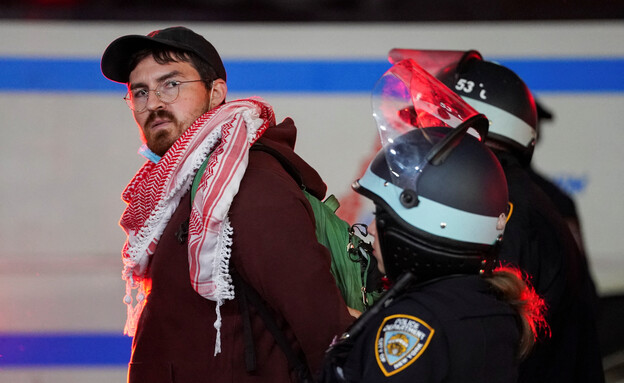In a lawsuit filed by Israeli and American citizens who were victims of the 7/10 events, the plaintiffs aim to establish a connection between protest organizations at US universities and Hamas, while seeking to hinder these organizations from raising funds and operating on campuses. The lawsuit also demands additional information as part of the legal process. Several law firms and individuals are involved in formulating the prosecution materials.
The indictment highlights a social media campaign that followed Hamas’s attack on Israel, linking the AMP and NSJP organizations to the planning and promotion of the attack. It references a “toolbox” distributed to protest leaders containing instructions on propaganda, managing protests, and recruiting participants. The document encourages actions beyond symbolic gestures and justifies violent confrontation as legitimate resistance. Graphics included in the toolbox depict methods used by Hamas terrorists in a significant attack.
The prosecutors allege that not only Hamas but also Iran’s Revolutionary Guards are involved in these organizations’ activities, with a shared goal of influencing US policy and supporting the goals of terrorist organizations. The indictment seeks compensation from the organizations for their collaboration with terrorists and incitement of violence. The legal team involved in the case is committed to presenting strong evidence in court to bring these organizations to justice.
In an interview with “Globes,” Greenberg Traurig law firm president expressed pride in representing the plaintiffs and emphasized the importance of holding these organizations accountable for their actions in collaboration with terrorists. The article sheds light on the complex legal proceedings surrounding this case, highlighting its implications for US universities and their involvement in political activism.
Overall, this case raises important questions about freedom of expression versus promoting terrorism through political activism at universities. While it is crucial to uphold free speech rights, it is equally important to ensure that such activities do not lead to harm or violence against innocent individuals or communities. As such, this case serves as an example of how legal systems can work to hold individuals or groups responsible for their actions when they violate laws or moral norms.
The prosecutors have presented compelling evidence against these protest organizations, including links between them and terrorist groups like Hamas and Iran’s Revolutionary Guards. It remains to be seen whether they will be found guilty or not, but if proven true, this could have far-reaching consequences for US universities and their policies around student activism.
As such, it is crucial that we continue to monitor cases like this one closely while also working towards building bridges between different communities rather than perpetuating cycles of violence through political activism at universities or elsewhere.
In conclusion, this case highlights both sides’ arguments regarding freedom of expression versus promoting terrorism through political activism at universities. While it may be difficult to balance these competing interests without compromising either side’s rights or safety concerns, it is essential that we continue to strive towards peaceful solutions that promote dialogue rather than division among different communities.


